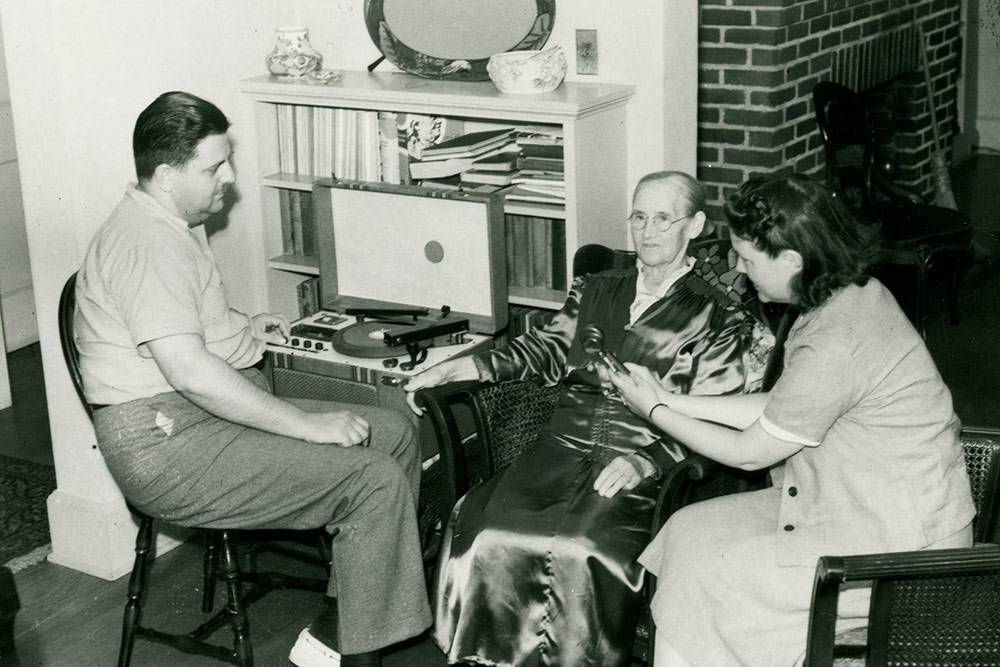
Frank and Anne Warner record Rebecca King Jones at their Durham home, ca. 1940. From the Frank and Anne Warner Collection, Rubenstein Library
Music carries meaning in our lives that connects us to shared traditions, builds relationships and communities, and gives powerful expression to our beliefs and values. A current exhibit celebrates American music from several collections in the David M. Rubenstein Rare Book & Manuscript Library through diaries, letters, photographs, posters, zines and musical scores and recordings.
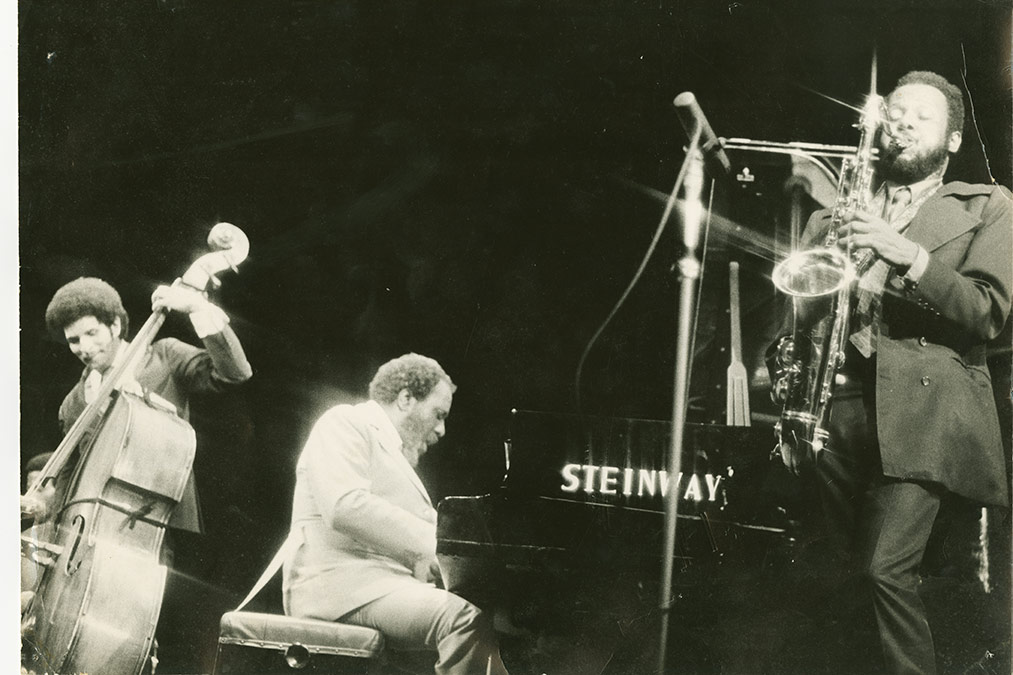
Above, Paul Jeffrey with Thelonious Monk, undated. From the Paul Jeffrey Collection, Rubenstein Library. Below, Frank Brown with car and field recording equipment, ca. 1940. From Frank Brown Collection, Rubenstein Library
Music can be found throughout the Rubenstein Library, from the Historic American Sheet Music Collection to the Jazz Archives (see the Paul Jeffrey image above), and myriad other examples spanning the 11th to 21st centuries. But you’ll also find it in more unexpected collections: the Southern History and Culture Collections; the Sallie Bingham Center for Women’s History and Culture; the Archive of Documentary Arts.
The Frank Brown Collection includes photos, notebooks and cylinder recordings made by the late Duke professor as he traveled around 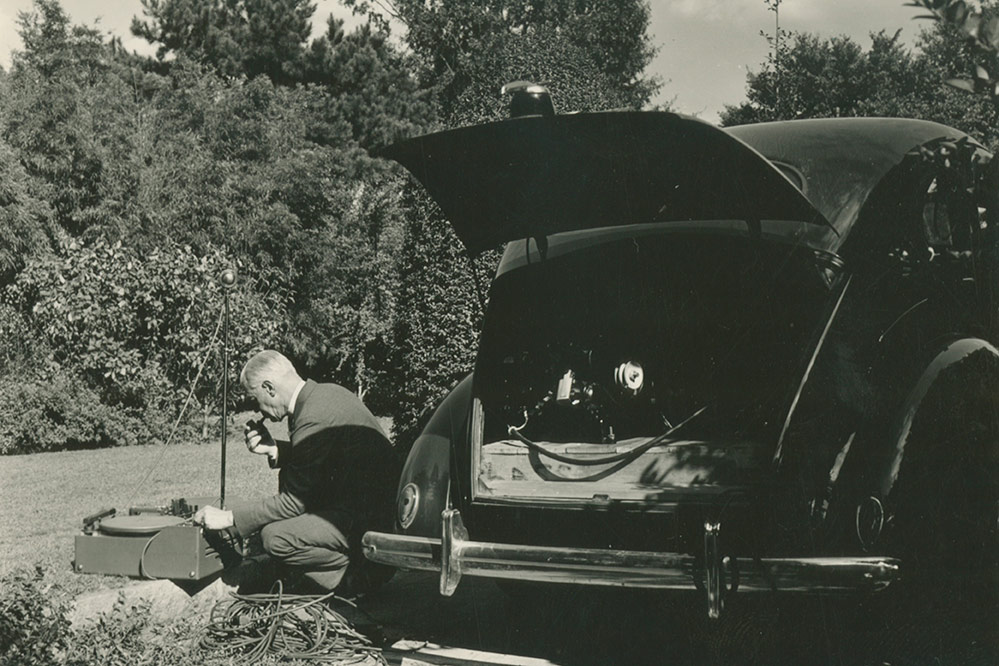 the state collecting folk ballads. The Brown Collection case in the exhibit was developed by Trudi Abel, Victoria Szabo and Meghan O'Neil in connection with NC Jukebox, Duke Bass Connections Project in which undergraduates conducted research related to Brown and the folk ballad collection. Below are 1939 recordings of versions of "Barbara Allen" and "Our Goodman."
the state collecting folk ballads. The Brown Collection case in the exhibit was developed by Trudi Abel, Victoria Szabo and Meghan O'Neil in connection with NC Jukebox, Duke Bass Connections Project in which undergraduates conducted research related to Brown and the folk ballad collection. Below are 1939 recordings of versions of "Barbara Allen" and "Our Goodman."
The exhibit also includes items from the more than 5,000 images taken by noted photographer William Gedney during his travels around the country. The collection includes photos Gedney took of a number of leading composers, conductors and musicians, ranging from Gunther Schuller to self-taught composer and instrument-maker Harry Partch. Below are Gedney photos of John Cage, left, and Aaron Copland.
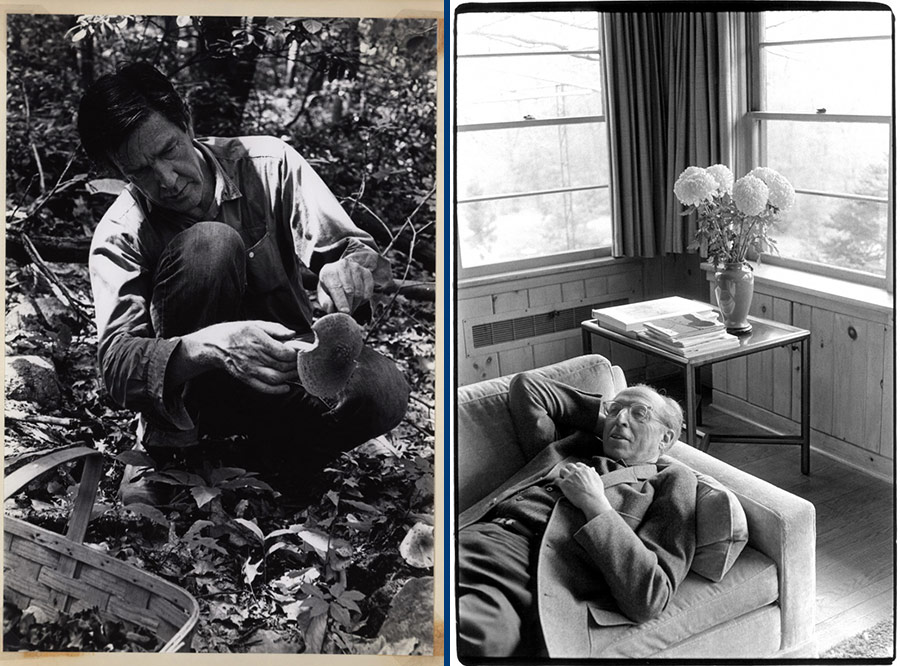
The Rubenstein's collection of zines and women's protest songs, part of the Sallie Bingham Center for Women's History and Culture, provide a rich trove of writing and music that often gets ignored in music studies.
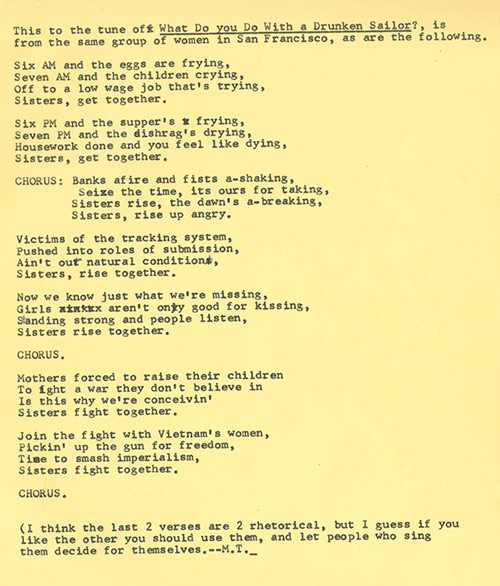 Left, Meredith Tax, one of the pioneers of the women's liberation movement, reworked the traditional tune of "What Do You Do With a Drunken Sailor" and reworked the lyrics to a song that more reflected the daily experiences of American women.
Left, Meredith Tax, one of the pioneers of the women's liberation movement, reworked the traditional tune of "What Do You Do With a Drunken Sailor" and reworked the lyrics to a song that more reflected the daily experiences of American women.
While a member of a Boston feminist group in the 1960s, Tax began putting new lyrics to old folk tunes.
"I have always believed that the most powerful and satisfying movements are ones that sing, and we certainly did," Tax said. The exhibit also includes Tax's reworking of the "The Battle Hymn of Women" for a 1970 women's march.
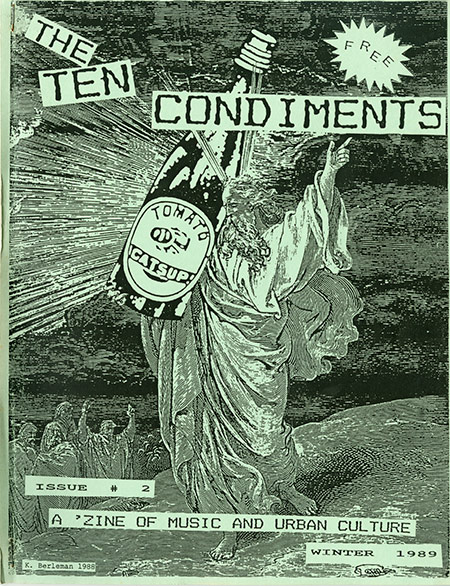 The Bingham Center's zine collection also includes a number of self-published music newsletters and zines, an essential source for students interested in Riot Grrrls and other women's music movements of the recent decades.
The Bingham Center's zine collection also includes a number of self-published music newsletters and zines, an essential source for students interested in Riot Grrrls and other women's music movements of the recent decades.
Right, Libby Gilbert's "The Ten Condiments" focused on music and poetry from 1988-89, one of many publications Gilberts produced focusing on the contemporary undergraduate rock music scene.
These diverse collections are being used by students in the classroom and researchers who use music in the study of cultural heritage, political movements, religion, war, race relations and more.
Each artifact in this exhibit imparts its own musical story and reveals the power of music to transcend the notes on the page and transform lives.
The exhibit is in conjunction with the annual meeting of the Southeast Chapter of the Music Library Association, which will be held at Duke beginning Thursday and running through Saturday. The library exhibit is open through Nov. 4.